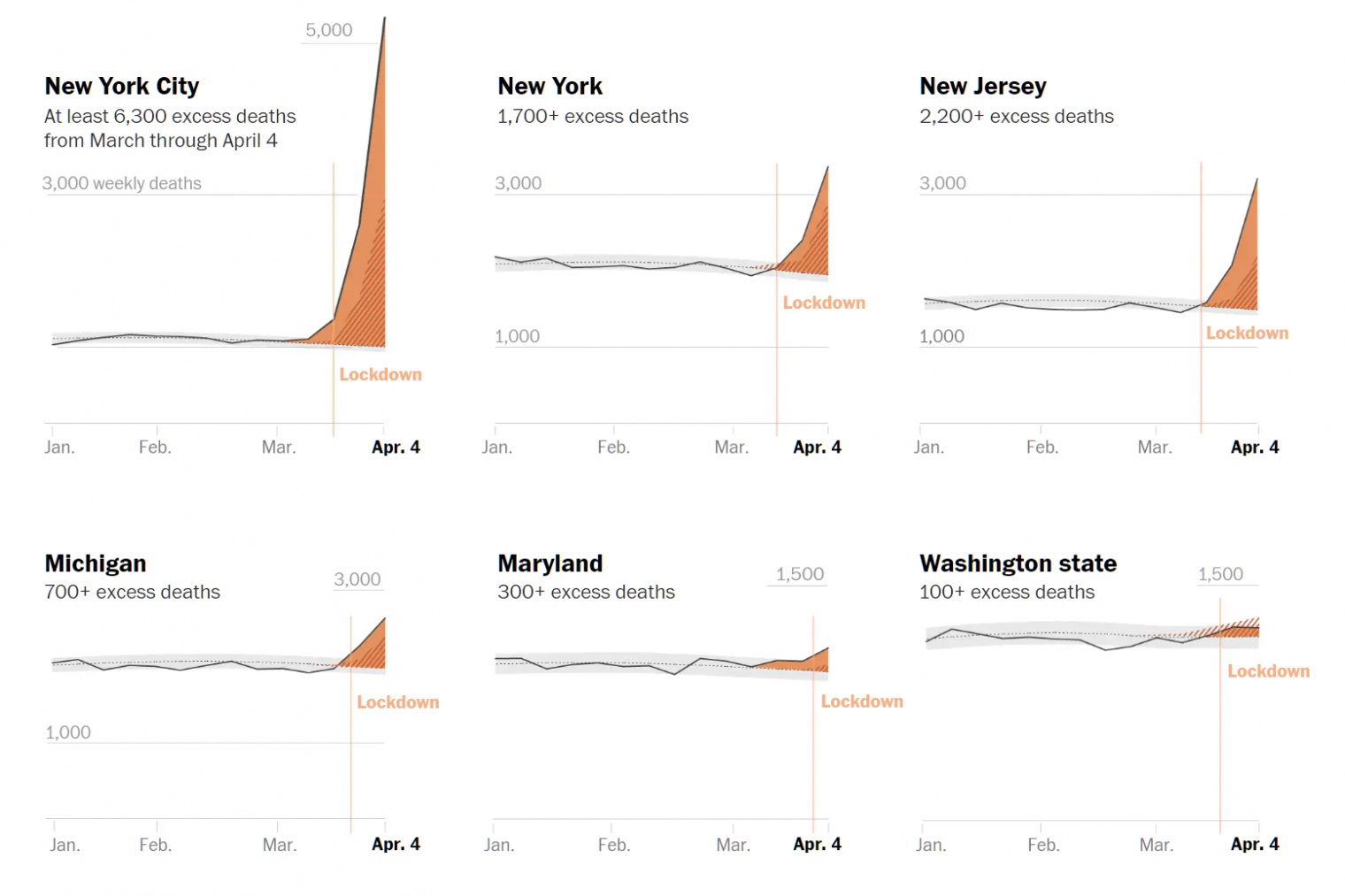Here are some folks who, had they been listened to, could have saved Americans, or at least Texans, a lot of anxiety… “Stockpiling Ventilators for Influenza Pandemics” (Emerg Infect Dis. 2017 Jun; 23(6)) by Hsin-Chan Huang, Ozgur M. Araz, David P. Morton, Gregory P. Johnson, Paul Damien, Bruce Clements, and Lauren Ancel Meyers.
Some excerpts:
In preparing for influenza pandemics, public health agencies stockpile critical medical resources. [except for masks?]
When severe influenza outbreaks cause high rates of hospitalization, a surge of medical resources is required, including critical care supplies, antiviral medications, and personal protection equipment. Given uncertainty in the timing and severity of the next pandemic, as well as the time required to manufacture medical countermeasures, stockpiling is central to influenza preparedness. However, difficulty in forecasting and limited public health budgets often constrain decisions about sizes, locations, and deployment of such stockpiles.
Mechanical ventilators are essential for treating influenza patients in severe acute respiratory failure. Substantial concern exists that intensive care units (ICUs) might have insufficient resources to treat all persons requiring ventilator support. Prior studies argue that current capacities are insufficient to handle even moderately severe pandemics…
The Centers for Disease Control and Prevention (CDC) manages this Strategic National Stockpile (SNS) and has plans for rapid deployment to states during critical events … However, SNS ventilators might not suffice to meet demand during a severe public health emergency. In 2002, the SNS included ≈4,400 ventilators, and 4,500 SNS ventilators were added during 2009 and 2010. The American Association for Respiratory Care suggested the SNS inventory should increase to at least 11,000–16,000 ventilators in preparation for a severe influenza pandemic.
Our retrospective analysis of the 2009 influenza A(H1N1) pandemic in Texas suggests that hospitals had enough ventilators on hand to treat all patients requiring mechanical ventilation throughout the pandemic. Although these quantities are expected to suffice for a moderate (1957- and 1968-like) pandemic, in which hospitalization rates roughly triple, they would fall far short in a severe (1918-like) pandemic. If we optimistically assume perfect deployment, that is, 0 wastage, by assuming timely delivery, adequately trained and available staff (respiratory therapists, nurses, and physicians), sufficient space to care for a potentially large number of patients, and requisite ancillary equipment and supplies, then even a central stockpile of 8,900 ventilators in Texas—the total number of SNS ventilators in 2010—would fall short, with an expected unmet demand of 576 patients.
Who will vote with me to put these folks in charge of the next plan to fight the last war? And who will bet that if we’d ordered ventilators in 2017 for delivery in 2018-2019 it would have been a lot cheaper?
Note: I found this paper while trying to search for what it might cost to treat a COVID-19 patient in a U.S. hospital ICU with ventilator support. Of course, that was a question that was impossible to answer.
Was this knowledge new in 2017? Has anyone done a study of what it would look like to prepare on a national level, not just in Texas? The Texas paper provides references back to 2006, all coming to the same conclusion: we need to stockpile a bunch of stuff if we want to be ready for a flu or flu-like pandemic.
One of the references from 2015 is “Estimates of the Demand for Mechanical Ventilation in the United States During an Influenza Pandemic”. It is authored by five government workers, four of whom were at the CDC (during the sorely missed administration of Barack Obama!). The authors suggest that more than 60,000 additional ventilators to provide a reasonable assurance of nobody dying for want of a ventilator. What was their conclusion for the administration and Congress of 2015?
The challenge for public health authorities is to plan and prepare how to best respond to the next pandemic that will cause such a rapid and large demand for mechanical ventilation in critically ill patients. Ventilator preparedness planning has to be prioritized against competing influenza pandemic preparedness planning efforts. The time to start planning is now, and the results presented here may help guide such efforts.
What did Barack Obama do in response to the authors’, all of whom worked for him, projection that 308,000 Americans would die if a flu pandemic hit and the ventilators weren’t stockpiled? A month after the paper:
President Obama on Friday hailed a Supreme Court decision legalizing same-sex marriage nationwide, saying justice has arrived “like a thunderbolt” for gay and lesbian couples.
Obama opposed same-sex marriage when he was first elected president in 2008. He backed it before the 2012 election, saying his views had been “evolving” during his time in the White House.
“Today, we can say in no uncertain terms that we have made our union a little more perfect,” Obama said from the Rose Garden.
From July 2015:
“What I found during the course of the presidency, and I suppose this is true in life, is that investments and work that you make back here sometimes take a little longer than the 24-hour news cycle to bear fruit.”
Well, he was right about this particular investment decision! (to not purchase PPE)
He had developed clairvoyance by November 2015:
“There’s no doubt that the longer I’m in this job, the more confident I am about the decisions I’m making and more knowledgeable about the responses I can expect. And as a consequence, you end up being looser. There’s not much I have not seen at this point, and I know what to expect, and I can anticipate more than I did before.”
Was there any politician that saw this coming? George W. Bush!
Full post, including comments 

